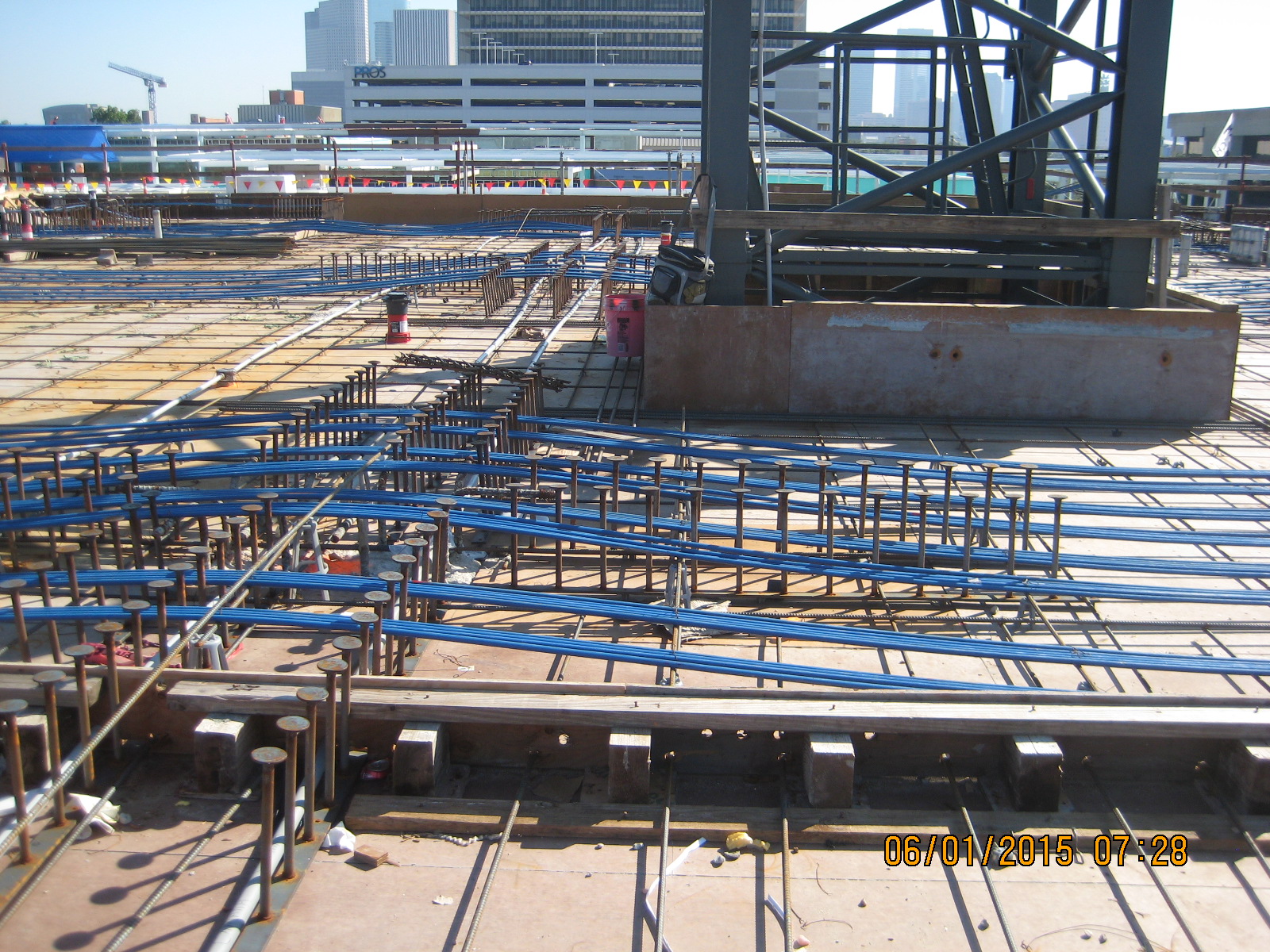

Stressing Procedures
We’ve discussed extensively that post-tension layouts are specified by force – one way or another – and that tendons are pulled by hydraulic jacks to impart these forces to the anchors and slabs. We haven’t discussed the process, and that’s fundamental to understanding post-tension installations.
As we’ve mentioned before, the steel cable used for post-tension tendons has a guaranteed minimum ultimate tensile strength (MUTS) of 270,000 psi. For the 1/2″ diameter material that’s generally used, this translates into a minimum breaking force of 41,310 pounds. Engineers do care about that number, but a far more important one is where the steel yields – where the steel has noticeable, permanent change in the direction of an applied force. Less than that, and the steel is in the elastic region (meaning that it snaps back to its old length if the force is removed); more than that, and the steel has experienced plastic deformation. Tendons that have plastic deformations are generally not acceptable – this generally happens at 243,000 psi, or a little over 37,000 pounds. In order to give ourselves some breathing room, the ACI specifies that the general maximum pull we can put on a tendon is 216,000 psi (80% of MUTS), which translates to 33,000 pounds.
It is critical to understand that, for quality control purposes, every post-tension tendon is pulled to the same force. This is tracked using a calibrated gauge on the hydraulic ram. While the hydraulic cylinders are very carefully machined (allowing us to know their area), the vagaries of piston wear, losses in fittings and manufacturing tolerances in both the jack and the gauge mean that every time a ram is serviced, the gauge must be re-calibrated. We’ll discuss this calibration in a later article, but a jack should never be used if a recent calibration sheet is not available.
Next, the jack has two hydraulic functions. The first is pulling the strand to 33 kips to meet that calibrated gauge pressure. The second is to seat the wedges in the post-tension anchor cavity. As we discussed in our article about anchors, the hydraulic nosepiece hammers the wedges into the cavity when pressure is released in the hydraulic pistons that stretch the tendon. Unfortunately, there is always some strand movement when this happens. This is called seating loss, and we’ll discuss it in detail in a later article.
While these procedures aren’t complicated, it is critical that they be conducted by experienced personnel. Misunderstanding how the ram works and how wedges are seated can cause serious damage to the tendon, and could potentially injure the operator. Please refer any questions to Advanced Post-Tension immediately.

